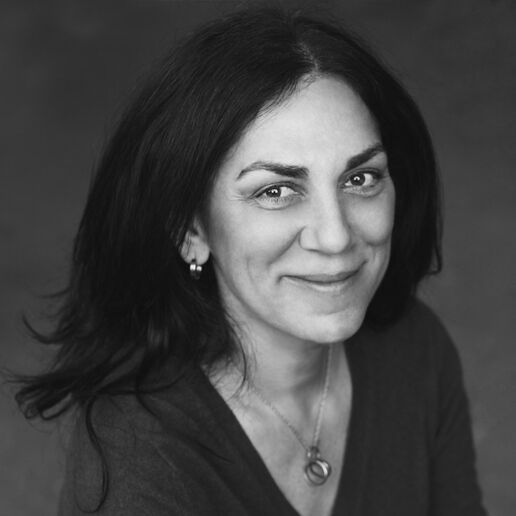TULYA MADRA
She left Istanbul for the first time in 1996 and moved to New York. She then returned to Istanbul in 2004 only to settle down in Ayvalık after a year of camping in the city. Writing a few volumes of Ayvalık in 10 years, she reunited with New York in 2015. Even though she expresses that “these three regions are her homeland.”, İstanbul obviously has the leading role.
We view İstanbul from her studio santimetre in Red Hook, Brooklyn, reviewing the ports, streets and, shops and counters by journeying into the past… Tulya expresses that she is astonished by the fact that she now feels like a stranger to a city once she called “her homeland”. Meanwhile, she commemorates the streets and neighborhoods she used to live in, one by one (Bostancı, Nişantaşı, Bebek, Cihangir and Tünel respectively). She says “These neighborhoods have changed their forms and meaning throughout the time. I find it hard to recognize this city any more, which I knew like the back of my hand once.” Yet her voice lacks a heavy naphthalic nostalgic taste. Tulya Madra is someone who thinks and talks about the new; her concern is not about the change itself but about the methods of change. “I always dreamt that İstanbul would be a city that changes through preserving, not consuming. I wish I could return and live there while there are still close friends before the city totally transforms and gets lost for me.”
Tulya’s İstanbul is rather detail-oriented and has a rich repertoire of clues; it is a city that doesn’t readily give away its secrets. With the help of her friends’ and her own memory, she takes pleasure to focus and explore the streets at different times of the day, sidetracking the usual daily flow, and trace the İstanbul that she had left behind. “The hinterland of my design aesthetics is full of material and memories collected while surfing these streets”
She, of course, has favorite neighborhoods of which she says, “They always make me excited.” Like the Thursday Bazaar. “From one end to the other, various kinds of materials, the ideas that jump to my mind from the richly stocked shelves of miscellaneous tools and materials, the samples I collected from these stores was hard to fit in my studios”. We continue İMC, Çukurcuma, Horhor, Dolapdere, Çağlayan, Kapalıçarşı, Spice Bazaar, Tahtakale, Galata, Kadıköy Bazaar…
Geometric dreams, silent curves
Her first contact with ceramics has been in 2004 when she returned to İstanbul from New York and began “camping” at Tünel. The coordinates of this contact take us to Nuray Ada’s gallery in Tünel. “We were neighbors then. She invited me to hang around in her studio and teach me to work with the lathe. And she taught me with all her kind and calm attitude.” Tulya spent her days in this golden period of Tünel with a happy intoxication of centering the mud ball on the manual lathe, and the nights by chilling out as she danced at Bade then located at the other edge of the street.
Santimetre carries the streets of İstanbul in its genetic codes even though it was created in Ayvalık. The color memory, geometrical dreams, silent curves and the dignified looks of the city, its poetry is written on water and its whispers have always constituted the unseen colors of santimetre. All the bitter and sweet experiences gained in different studios and all the dreams collected from the counters of Perşembe Bazaar, Kadıköy Bazaar, Kasımpaşa, and Çağlayan as well as the pottery that survived in all the houses she has lived and her memory, make up the original santimetre whose spirit can never be imitated even though its design might be copied.
One should share her words on her purpose without changing a word, which should be read underlined: “When we first started to work as santimetre, our purpose was basically to make peace with the processes of production by combining the design methods with those of the existing vernacular manufacturing systems. It was mainly recognizing the theoretical and practical connections between thinking about a product and producing it; buttoning up some of those disconnections, renew the friendship between the designed product on paper and the methods of producing it. Our joy was experimenting hands-on and not having to hear the words “this can’t be produced as such!”
A Symphonic Whistle
Santimetre is a production studio with an established brand; it is a matrix of a group of products. It presents the consumer a refined and professional production infrastructure through which the consumer participates to the end result with her choice of forms and colors. She says “santimetre is only a part of my ongoing design work and its future I can’t predict.” She goes on to explain why she did not brand the company with her own name as “Tulya Madra”: “Because I didn’t want this brand to restrict my individual space of freedom… Santimetre is a field of experiments; it mimics the mass production and the marketing processes on a smaller scale and it tries to incorporate an emotional, physical and mental familiarity to the end products. It is a team effort that tries to whistle at the international market without having any other financial support other than its own production revenues. I would like to see that santimetre can survive by itself, as a team and a brand, without my lead anymore. So that I can travel between my homelands freely and once again become “a İstanbulite” from time to time.
For those who would like to start the day and color their lives or give a new meaning to their “friend gatherings” through this symphonic whistle from New York to Ayvalık: @santimetrestudio and www.santimetre.shop


